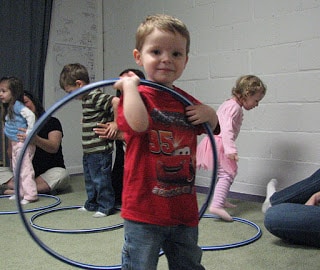@font-face { font-family: “Times New Roman”; }@font-face { font-family: “Arial”; }@font-face { font-family: “Courier New”; }@font-face { font-family: “Wingdings”; }@font-face { font-family: “Verdana”; }@font-face { font-family: “Calibri”; }@font-face { font-family: “Georgia”; }p.MsoNormal, li.MsoNormal, div.MsoNormal { margin: 0in 0in 0.0001pt; font-size: 10pt; font-family: “Times New Roman”; color: black; }p.MsoHeader, li.MsoHeader, div.MsoHeader { margin: 0in 0in 0.0001pt; font-size: 10pt; font-family: “Times New Roman”; color: black; }a:link, span.MsoHyperlink { color: blue; text-decoration: underline; }a:visited, span.MsoHyperlinkFollowed { color: purple; text-decoration: underline; }table.MsoNormalTable { font-size: 10pt; font-family: “Times New Roman”; }div.Section1 { page: Section1; }ol { margin-bottom: 0in; }ul { margin-bottom: 0in; } @font-face { font-family: “Times New Roman”; }@font-face { font-family: “Arial”; }@font-face { font-family: “Courier New”; }@font-face { font-family: “Wingdings”; }@font-face { font-family: “Verdana”; }@font-face { font-family: “Calibri”; }@font-face { font-family: “Georgia”; }p.MsoNormal, li.MsoNormal, div.MsoNormal { margin: 0in 0in 0.0001pt; font-size: 10pt; font-family: “Times New Roman”; color: black; }p.MsoHeader, li.MsoHeader, div.MsoHeader { margin: 0in 0in 0.0001pt; font-size: 10pt; font-family: “Times New Roman”; color: black; }a:link, span.MsoHyperlink { color: blue; text-decoration: underline; }a:visited, span.MsoHyperlinkFollowed { color: purple; text-decoration: underline; }table.MsoNormalTable { font-size: 10pt; font-family: “Times New Roman”; }div.Section1 { page: Section1; }ol { margin-bottom: 0in; }ul { margin-bottom: 0in; }
@font-face { font-family: “Times New Roman”; }@font-face { font-family: “Arial”; }@font-face { font-family: “Courier New”; }@font-face { font-family: “Wingdings”; }@font-face { font-family: “Calibri”; }@font-face { font-family: “Georgia”; }p.MsoNormal, li.MsoNormal, div.MsoNormal { margin: 0in 0in 0.0001pt; font-size: 10pt; font-family: “Times New Roman”; color: black; }a:link, span.MsoHyperlink { color: blue; text-decoration: underline; }a:visited, span.MsoHyperlinkFollowed { color: purple; text-decoration: underline; }table.MsoNormalTable { font-size: 10pt; font-family: “Times New Roman”; }div.Section1 { page: Section1; }ol { margin-bottom: 0in; }ul { margin-bottom: 0in; } Moving to Learn. What does a child’s brain need to learn? Answer: Movement For those who want the background info…. There are 3 distinct but interconnected kinds of body/mind processing: sensation, emotion, and thought. (Smart Moves, pg. 12)
- Sensations received through our eyes, ears, nose, tongue, skin, and proprioceptors are the foundation of knowledge. (NOTE: Proprioceptors allow our brains to explore and understand the environment through our muscle sense.) – (Smart Moves, pg. 43)
- Emotions provide information to the REASONING process.
- The body needs movement to anchor thought and build the skills with which we express our knowledge as lifelong learners. No matter how abstract our thinking may be, it can ONLY be manifested through the use of the muscles in our bodies.
Movement is the key to learning!
The bottom line: Multi-sensory Learning (rooted in movement) partnered with a positive emotional experience leads to LEARNING, REASONING, and THOUGHT. In order for a child to learn we must involve the mind and the body with multi-sensory learning that is INTEGRATED. That’s the key to success. How does that work in our classrooms? In Village for babies we begin by just manipulating limbs and encouraging the simplest of moves. You, as the parent, are doing the moving with/for your child. In Our Time for toddlers, we begin to build a repertoire of ideas and encourage our children to explore their body movements for themselves. Last week, in the activity “Clapping Land” circle dance, we have an example of a simple synchronized/patterned dance that we will expand on in Imagine That for 3-5 year olds where ideas, creative movements, and control will be left to the children. In the Young Child 2-year curriculum for ages 5-7, all of your time and efforts come to fruition not only in movement to much more complex dances, but in instrumental play and high level reasoning. Your child will play in multi-part ensembles and will learn when to play and which instruments to play all while reading real musical notes and rhythms. WOW! A Good Beginning truly NEVER ends! “Movement is the key to learning! Our brains fully develop through movement activities such as crawling, rolling, turning, walking, skipping, reaching, swinging and much more! The brain has a plan for development that involves specific and intensive motor activities to make full use of our complicated nervous system.” -“Movement and Music: The Keys to Learning” by Anne Green Gilbert, Kindermusik Notes Nov/Dec 1998 NOTE: Anne Green Gilbert is author of Teaching the Three Rs through Movement and Creative Dance for All Ages. Click here for Anne’s article highlighting music & movements impact on academics! http://www.newhorizons.org/strategies/arts/gilbert.htm The Benefits. Through multi-arts and movement activities, foundational patterns and dispositions needed for success in school and life are set up and reinforced. New experiences are integrated and anchored within the brain, enabling children to unlock mysteries of our symbol system, make sense of their world, and learn to live and work peaceably with others. In schools struggling to close achievement gaps, arts and movement programs can be a key to success. Young children who participate in the arts for at least three hours, three days a week for a year are · 4 times more likely to be recognized for academic achievement, · 3 times more likely to be elected to class office within their schools · 4 times more likely to participate in a math and science fair · 3 times more likely to win an award for school attendance · 4 times more likely to win an award for writing an essay or poem · 2 times more likely to read for pleasure, and · 4 times more likely to perform community service. Gains in dispositions for learning are critical outcomes of participation in arts and movement programs. (Catterall, 2002) This week spend time learning to move with your son/daughter or even encouraging them to move, so that your child can move to learn. The statistics are compelling. For more information on why learning is not all in your head, see Smart Moves by Carla Hannaford.



Leave a Reply